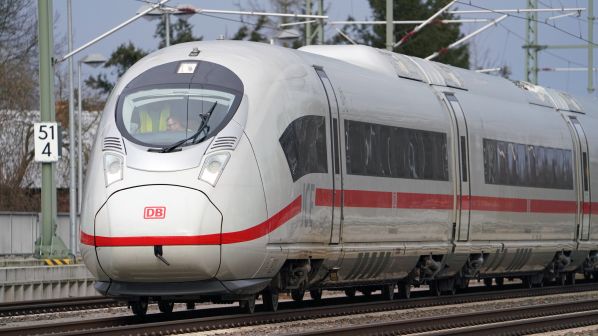THE European Commission’s (EC) proposal to reform Europe’s railway network capacity allocation process is a timely intervention to fix a long-standing issue.
Capacity allocation is maxed out on some key European railway routes. Yet some of these paths are not always used. This is frustrating for operators that could conceivably offer more frequent and attractive services, for both passengers and shippers, aiding modal shift to rail, a frequently-stated objective of the European Union (EU).
Under the current process, which was introduced as part of the 2012 recast of the First Railway Package, the capacity allocation process starts around a year before a new timetable is introduced. Operators are required to request their desired paths and typically receive their allocation eight to nine months before the scheduled start of services. In cases where demand exceeds supply, paths are allocated depending on the priority of the service. However, detractors describe this process as too rigid. It is especially problematic for freight.
While many rail freight operators can forecast 70-75% of their activities a year in advance, this is not possible for a substantial portion of their business. With a limited ability to respond to requests to move goods at short notice, the remedy is for operators to request more paths than they require at the time of capacity allocation, providing the flexibility to offer these services when required but at the expense of the railway’s overall operational efficiency.
The EC’s proposal - one of three included in its Green Transport Package - aims to increase this flexibility. It draws on the Timetable Redesign for Smart Capacity Management Project (TTR), the result of work by Forum Train Europe and RailNetEurope (RNE), supported by the European Rail Freight Association (ERFA). Among the changes is an initiative to allow infrastructure managers (IMs) to pre-plan capacity allocation, grouping trains with similar performance characteristics and improving network utilisation. Crucially, IMs will be required to reserve some capacity for allocation at short notice as part of a rolling planning concept, which is better suited to today’s just-in-time supply chains.
The proposal has been broadly welcomed by the European railway community. Mr Alberto Mazzola, the executive director of the Community of European Railways and Infrastructure Companies (CER), praises the proposal’s comprehensiveness. “As a sector we have asked for this on several occasions,” he says. “Our request was quick and surgical - we asked to change one article. We got 77. It is slightly different from what we wanted, but it is well done, it is comprehensive, and we appreciate it.”
As well as benefitting freight operators, he says the proposed changes will enable passenger operators to sell tickets up to a year in advance compared with three months at present, improving competitiveness with airlines. In addition, it will provide a longer-term perspective of network operations, offering greater certainty and reliability for IMs when planning maintenance and upgrade works, as well as incident response. Critically, a reinforced European Network of Infrastructure Managers (Enim) - which will manage and coordinate cross-border capacity - is expected to support the growth of international services as well as improve coordination of infrastructure work on key cross-border routes, helping to minimise long-term disruption.
Mazzola has urged swift adoption of the new policy by the European Parliament and the European Council. Time is certainly of the essence as European elections are scheduled for May 2024. Mazzola is nevertheless encouraged by progress in parliament and is hopeful that a first reading could take place before the elections.
Even if the proposals sail through the legislative process, which is not likely to be completed until at least 2025, their full benefits are not expected to be realised until 2030. The legislation is therefore going to have a limited impact on efforts to increase rail freight traffic by 50% by 2030, a target enshrined in the EU’s Sustainable and Smart Mobility Strategy.
Yet, as Mazzola points out, there are various quick wins that the sector could and should deliver in the near term. Chief among these is the adoption of a digital capacity management system, which offers a real-time overview of network capacity. “If someone cancels a train path, I will be able to see that it is available,” he says.
IMs should also prepare for a new way of working. This will require cultural changes within the organisation, something that Mazzola says CEOs are aware of. It will also demand the allocation of funding to support the transition. Hopefully the obvious potential benefits will convince IMs and governments that this is a worthy investment.
Mazzola considers the new capacity allocation process to be a short-term measure to improve the railway’s overall performance and capacity. Medium-term investment in ERTMS and longer-term investment in better infrastructure are no less of a priority. German Rail’s (DB) vision for a new 30,000 Metropolitan Network to connect all of Europe’s major cities by high-speed rail is the latest study to call for expansion of the European high-speed network in support of decarbonising transport.
Coordinated lobbying to promote this proposal and a similar plan developed by CER, Europe’s Rail and AllRail is expected to begin in the autumn. This is certainly a time when rail’s voice needs to be heard.
While CER supports the Carbon Labelling element of the Green Transport Package, Mazzola is concerned about the Weights and Measures Directive. In particular, he says allowing 44-tonne gigaliner trucks to operate between member states that permit these vehicles could reverse modal shift by boosting the viability of long-distance road freight. That the Spanish presidency of the European Council is prioritising adoption of the directive, which is far simpler than the rail capacity proposal, is of real concern to CER and other pro-rail groups.
While the changes to capacity allocation are very much welcome, road’s dominance in political thinking continues to present challenges to modal shift to rail, and ultimately the decarbonisation of European transport.

